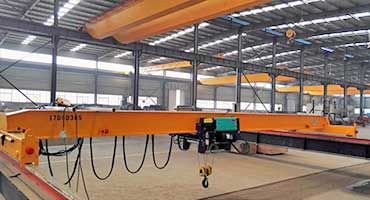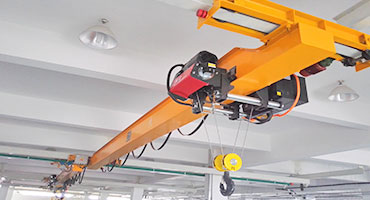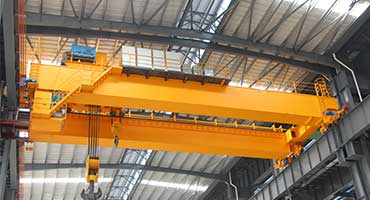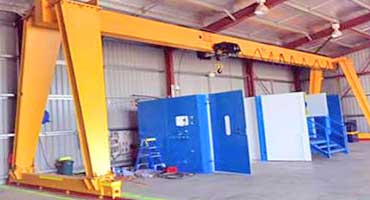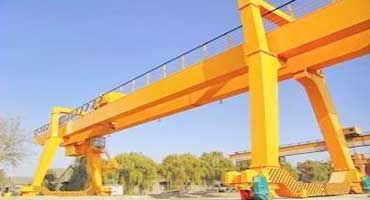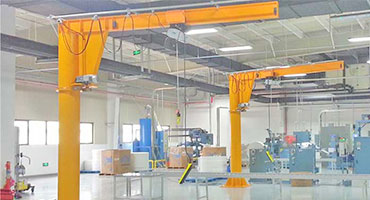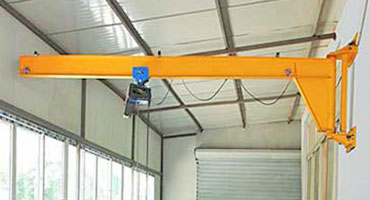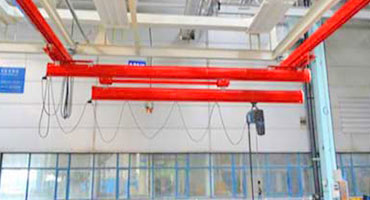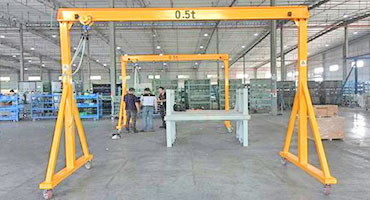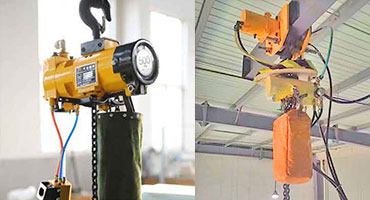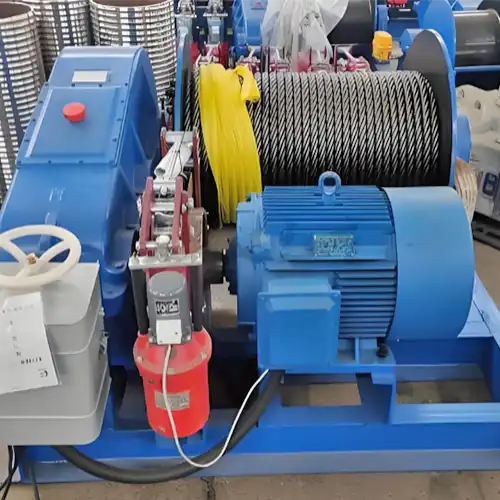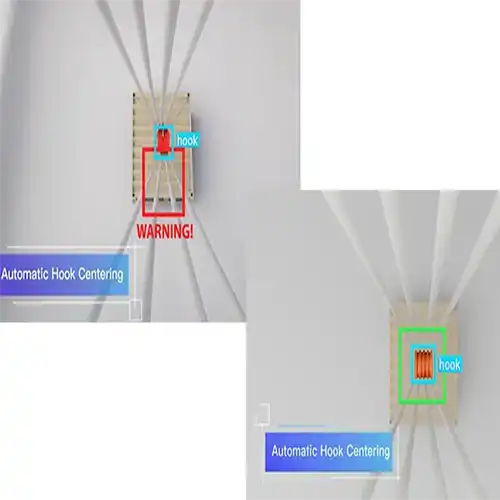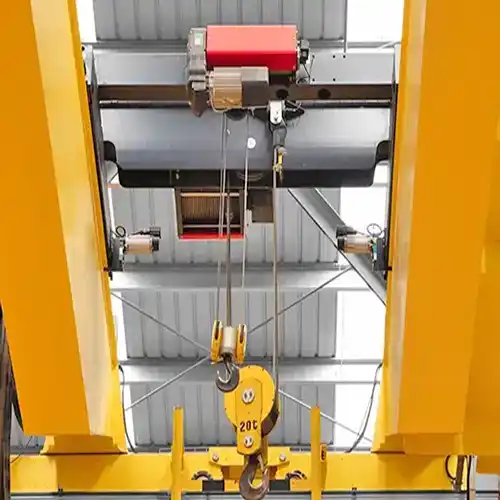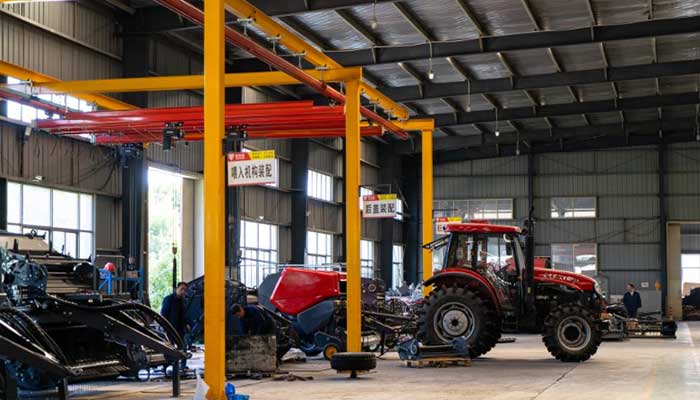
Overhead Bridge Crane for Agricultural Machinery Manufacturing
Agricultural machinery manufacturing
Agricultural machinery manufacturing refers to the process of designing, producing, and assembling machinery and equipment that are specifically used in agricultural activities. This includes a wide range of machines and devices that assist farmers in various tasks involved in cultivating crops, raising livestock, and managing agricultural land. These machines are designed to increase efficiency, reduce labor requirements, and enhance overall productivity in the agricultural sector.
Key aspects of agricultural machinery manufacturing include:
- Design and Engineering: Engineers and designers create blueprints and plans for agricultural machinery, taking into account factors such as functionality, durability, safety, and ease of use.
- Materials and Components: Manufacturers source the necessary materials and components to build the machinery. These may include metals, plastics, electronics, hydraulics, and more.
- Manufacturing Processes: Various manufacturing processes, such as welding, machining, casting, and assembly, are used to transform raw materials and components into functional agricultural machinery.
- Quality Control: Stringent quality control measures are implemented to ensure that the machinery meets safety standards, works as intended, and can withstand the rigors of agricultural use.
- Testing and Prototyping: Prototypes of new machinery are often tested extensively in realworld conditions to identify any design flaws or areas for improvement.
- Automation and Technology Integration: Modern agricultural machinery may incorporate advanced technologies such as GPS navigation, sensors, automation, and data collection systems to enhance precision and efficiency.
- Customization: Agricultural machinery may need to be customized to suit different crops, soil types, and local conditions. Manufacturers may offer various configurations and options to meet specific farmer requirements.
- Distribution and Sales: Once manufactured, the machinery is distributed through dealerships, retailers, or directly to farmers. Manufacturers may also provide training and support to users.
- Maintenance and Repairs: Manufacturers often offer maintenance guidelines and support services to ensure that the machinery continues to function optimally throughout its lifespan.
- Environmental Considerations: Sustainable manufacturing practices are increasingly important, with manufacturers aiming to reduce the environmental impact of their processes and products.
- Global Market: Agricultural machinery manufacturing is a global industry, with manufacturers catering to the needs of farmers and agricultural businesses around the world.
In summary, agricultural machinery manufacturing is a vital part of modern agriculture, providing farmers with the tools they need to maximize efficiency, productivity, and sustainability in their operations. The industry continually evolves to incorporate new technologies and innovations that address the challenges faced by the agricultural sector.
Why overheead bridge cranes are needed in Agricultural machinery manufacturing
Overhead cranes play a crucial role in agricultural machinery manufacturing for several reasons:
- Heavy Machinery Handling: Agricultural machinery can be large, heavy, and cumbersome to move. Overhead cranes have the capacity to lift and transport these heavy components and machines safely and efficiently within the manufacturing facility.
- Assembly Process: Agricultural machinery manufacturing involves assembling various components to create the final machines. Overhead cranes aid in the precise positioning and alignment of these components during assembly, ensuring accuracy and quality in the final product.
- Efficiency and Productivity: Overhead cranes can move heavy parts and equipment quickly, reducing the time required for assembly and manufacturing processes. This increased efficiency leads to higher productivity and faster production turnaround.
- Space Utilization: Agricultural machinery manufacturing facilities often have limited floor space due to the size of the machinery being produced. Overhead cranes allow for vertical movement, utilizing the available overhead space efficiently and maximizing the usable area.
- Safety: Handling heavy machinery manually can be hazardous for workers due to the risk of injuries. Overhead cranes provide a safer way to lift, move, and position heavy components, reducing the potential for accidents.
- Precision and Accuracy: Overhead cranes are equipped with controls that enable operators to move loads with precision, allowing for accurate placement of components during the manufacturing process. This accuracy contributes to the overall quality of the final product.
- Versatility: Overhead cranes can be equipped with various attachments and lifting devices, making them versatile tools for handling different types of components and machinery during the manufacturing process.
- Reduced Labor Requirements: Using overheead bridge cranes reduces the need for manual labor in lifting and moving heavy machinery. This not only improves efficiency but also reduces physical strain on workers.
- Flexibility in Production: Overhead cranes enable manufacturers to quickly reconfigure the production line layout or move heavy machinery between workstations, facilitating a more flexible manufacturing process.
- LargeScale Manufacturing: Agricultural machinery manufacturing often involves producing machinery on a large scale to meet market demand. Overhead cranes are essential for managing the movement of large quantities of components and finished products.
- Customization and Configuration: Overhead cranes can be customized to match the specific needs of the manufacturing process. This includes adjusting lifting capacities, spans, and features to accommodate the size and weight of the machinery being produced.
In summary, overheead bridge cranes are essential tools in agricultural machinery manufacturing due to their ability to handle heavy loads, improve efficiency, enhance safety, and contribute to the overall quality of the final products. They enable manufacturers to streamline their processes, reduce labor costs, and effectively manage the production of large and complex machinery.
Main types of overhead crane used in agriculutural machinery manufacturing
In agricultural machinery manufacturing, various types of overheead bridge cranes are preferred and frequently used to handle the heavy components and machinery involved in the production process. The choice of overhead crane depends on factors such as the size and weight of the machinery, the layout of the manufacturing facility, and specific production needs. Here are some types of overheead bridge cranes commonly used in agricultural machinery manufacturing:
- Bridge Cranes: Bridge cranes, also known as overhead bridge cranes or overhead traveling cranes, are one of the most common types used in manufacturing facilities. They consist of a horizontal bridge that spans the width of the facility and travels along overhead runways. Bridge cranes can have various configurations, such as single girder or double girder, and they are suitable for moving heavy machinery and components across the manufacturing area.
- Gantry Cranes: Gantry cranes are similar to bridge cranes but are supported by legs or columns on the floor rather than being suspended from overhead runways. They are particularly useful when there is limited headroom or when the manufacturing layout requires the crane to move across a wide area.
- Jib Cranes: Jib cranes are designed with a horizontal arm (jib) that rotates around a vertical mast. They are often used for tasks that require a limited range of motion and precise positioning, such as lifting components onto assembly stations.
- Monorail Cranes: Monorail cranes consist of a single rail along which a hoist or trolley moves. They are suitable for linear movement of components or machinery within a specific area of the manufacturing facility.
- Stacker Cranes: Stacker cranes are automated overheead bridge cranes used for storing and retrieving heavy materials or components from high storage areas. They are commonly used in warehouses and manufacturing facilities with high ceilings.
- Magnet Cranes: In cases where components have magnetic properties, such as metal sheets or parts, magnet cranes with electromagnetic lifters are used to pick up and move these materials safely and efficiently.
- Automated Guided Vehicles (AGVs): While not traditional overheead bridge cranes, AGVs are a form of automated material handling equipment that can be used in agricultural machinery manufacturing. They are selfguided mobile platforms that can transport materials, components, or even fully assembled machinery within the facility.
- Customized Cranes: In some cases, manufacturers may opt for customized overhead crane solutions that are specifically designed to match the unique requirements of their production processes. These cranes can be tailored to accommodate the size, weight, and configuration of the machinery being produced.
It's important to note that the choice of overhead crane depends on the specific needs and constraints of the agricultural machinery manufacturing facility. Manufacturers often work with crane specialists and engineers to determine the most suitable type of crane and its specifications to ensure safe and efficient material handling during the production process.
Agricultural machinery manufacturing industrial requirement for overheead bridge cranes
The requirements for overheead bridge cranes used in agricultural machinery manufacturing are influenced by the specific needs of the industry. Agricultural machinery can be large, heavy, and complex, which necessitates overheead bridge cranes that can handle these demands efficiently and safely. Here are some key industrial requirements for overheead bridge cranes used in the agricultural machinery manufacturing field:
- Lifting Capacity: Agricultural machinery components can be extremely heavy. Overhead cranes used in this industry need to have sufficient lifting capacity to handle the weight of various machinery parts and complete units.
- Durability and Reliability: Agricultural machinery manufacturing involves a continuous production process. Overhead cranes must be durable and reliable to ensure they can withstand the demands of heavy usage over extended periods.
- Safety Features: Safety is paramount in any manufacturing setting. Overhead cranes should have advanced safety features such as overload protection, emergency stop buttons, anticollision systems, and accurate positioning mechanisms to prevent accidents and injuries.
- Precision and Accuracy: Agricultural machinery requires precise positioning and alignment of components during assembly. Overhead cranes should offer high precision and accuracy to ensure proper fit and function.
- Flexible Configuration: Agricultural machinery manufacturing involves diverse machinery types and sizes. Overhead cranes should be adaptable and customizable to handle various component sizes and configurations.
- Automation Capability: As manufacturing processes become more automated, overheead bridge cranes should be compatible with automation systems, including integrating with production management software and manufacturing execution systems.
- Ease of Maintenance: Overhead cranes need to be designed for easy maintenance to minimize downtime. Accessible components, userfriendly control panels, and readily available spare parts contribute to efficient maintenance.
- Efficient Material Handling: Overhead cranes should facilitate efficient material movement, including swift lifting, transport, and positioning of components. This efficiency contributes to streamlined manufacturing workflows.
- Space Considerations: Agricultural machinery manufacturing facilities might have space constraints due to the size of machinery being produced. Overhead cranes should be designed to make the most of available vertical space without impeding other operations.
- Compliance with Regulations: Overhead cranes used in agricultural machinery manufacturing must meet relevant safety and quality standards set by industry regulations and authorities.
- Remote Control and Automation: For enhanced safety and efficiency, overheead bridge cranes can be equipped with remote control capabilities or even integrated into automated manufacturing systems.
- Service and Support: Manufacturers of overheead bridge cranes should provide comprehensive service, technical support, and training to ensure proper crane operation and maintenance.
- Environmental Considerations: Agricultural machinery manufacturing might involve exposure to harsh environments, such as dust, humidity, and temperature variations. Overhead cranes should be built to withstand these conditions.
- CostEffectiveness: While meeting industrial requirements, overheead bridge cranes should also offer a reasonable costbenefit ratio for manufacturers, considering the potential efficiency gains and improved production output.
In summary, overheead bridge cranes used in agricultural machinery manufacturing need to be robust, safe, precise, and efficient. They should be capable of handling the unique challenges posed by large and heavy machinery components while contributing to streamlined manufacturing processes. Manufacturers need to carefully consider these industrial requirements when selecting or designing overheead bridge cranes for their facilities.
Overhead crane forAgricultural machinery manufacturing
In agricultural machinery manufacturing, different procedures require various types of overheead bridge cranes to efficiently handle the different tasks involved in the production process. Here's a breakdown of the typical overhead crane used in each procedure:
Material Handling and Storage:
Typical Crane: Bridge Crane or Gantry Crane
Function: These cranes are used to move raw materials, components, and semifinished products from storage areas to the production line. They can also transport materials between different workstations within the facility.
Component Assembly:
Typical Crane: Bridge Crane or Gantry Crane
Function: These cranes assist in assembling different components to create the agricultural machinery. They ensure accurate placement of heavy parts and help in aligning components properly.
Welding and Fabrication:
Typical Crane: Jib Crane or Bridge Crane
Function: Jib cranes can assist in positioning components for welding, while bridge cranes are used to move large welded assemblies to subsequent stages of production.
Painting and Finishing:
Typical Crane: Bridge Crane
Function: Bridge cranes help move machinery and components through painting booths or finishing areas, ensuring even coverage and efficient handling during the painting process.
Quality Control and Inspection:
Typical Crane: Jib Crane or Bridge Crane
Function: Jib cranes can position components for detailed inspection, and bridge cranes can move finished products to inspection areas for thorough quality control checks.
Assembly Line:
Typical Crane: Monorail Crane
Function: Monorail cranes are suitable for linear material movement along assembly lines, aiding in the efficient transfer of components between workstations.
Storage and Retrieval in Warehouses:
Typical Crane: Stacker Crane
Function: Stacker cranes automate the storage and retrieval of components, spare parts, and finished products in warehouses, optimizing inventory management.
Heavy Lifting and Positioning:
Typical Crane: Bridge Crane or Gantry Crane with Magnet Attachment (for magnetic materials)
Function: These cranes are used to lift and position heavy components, machinery parts, or metal sheets with precision and safety.
Material Transport and Logistics:
Typical Crane: Automated Guided Vehicles (AGVs)
Function: While not traditional overheead bridge cranes, AGVs are used for autonomous material transport between different stages of production, enhancing efficiency and reducing manual labor.
It's important to note that the choice of overhead crane for each procedure depends on the specific requirements of the agricultural machinery being produced, the layout of the manufacturing facility, and the overall production workflow. Manufacturers often integrate a combination of crane types to ensure seamless material handling throughout the various procedures involved in agricultural machinery manufacturing.
Typical applications of overheead bridge cranes used in agricultura machinery manufacturing industry
Engine Assembly:
Application: Positioning heavy engine blocks onto assembly stations for installation of internal components.
Typical Crane: Bridge Crane
Features: High lifting capacity, smooth horizontal movement along the bridge, and precision control for accurate positioning.
Benefits: Allows for precise placement of heavy engine blocks, ensuring proper alignment and fit during assembly.
Function: Lifts and moves engine blocks to designated assembly stations, aiding workers in attaching internal components.
Harvester Header Attachment:
Application: Lifting and attaching large headers onto combine harvesters for crop harvesting.
Typical Crane: Bridge Crane or Gantry Crane
Features: High lifting capacity, versatility in moving large headers, and optional attachment devices for secure lifting.
Benefits: Facilitates the safe and efficient attachment of large headers to combine harvesters, streamlining the manufacturing process.
Function: Lifts headers and precisely positions them onto combine harvesters for crop harvesting.
Tractor Transmission Installation:
Application: Precisely positioning and installing complex tractor transmissions during assembly.
Typical Crane: Bridge Crane
Features: Robust lifting capacity, precise controls, and options for lifting devices suitable for heavy and complex components.
Benefits: Ensures accurate installation of tractor transmissions, reducing the risk of misalignment and enhancing overall tractor performance.
Function: Lifts and positions tractor transmissions during assembly, aiding workers in attaching them to the chassis.
Cabin Integration:
Application: Lifting and placing tractor or combine harvester cabins onto the chassis during assembly.
Typical Crane: Bridge Crane or Gantry Crane
Features: Sufficient lifting capacity, smooth movement, and optional attachments for handling cabin units securely.
Benefits: Helps in the safe and controlled placement of cabins onto agricultural machinery, ensuring proper fit and alignment.
Function: Lifts cabins and positions them onto the chassis of tractors or other machinery during assembly.
Implement Attachment:
Application: Attaching plows, seeders, or other implements to tractors for specific farming tasks.
Typical Crane: Bridge Crane or Gantry Crane
Features: Adequate lifting capacity, flexibility in lifting devices, and options for handling various implement types.
Benefits: Facilitates the attachment of specialized farming implements to tractors, enhancing their versatility for different tasks.
Function: Lifts and positions implements onto tractors or other machinery, allowing for easy attachment.
Chassis Welding:
Application: Moving chassis components into welding stations for fabrication and assembly.
Typical Crane: Bridge Crane or Gantry Crane
Features: Sturdy construction, smooth movement, and precise controls for accurate positioning during welding.
Benefits: Assists in moving chassis components to welding stations, enabling precise fabrication and assembly.
Function: Lifts and moves chassis parts to welding stations, aiding workers in joining components.
Irrigation System Installation:
Application: Lifting and positioning irrigation system components for installation in fields.
Typical Crane: Bridge Crane or Gantry Crane
Features: High lifting capacity, smooth movement, and precision controls for accurate installation.
Benefits: Facilitates the positioning of irrigation system components, ensuring proper setup for efficient water distribution.
Function: Lifts and places irrigation system components in fields or designated areas for installation.
Combine Harvester Header Removal:
Application: Removing large headers from combine harvesters for maintenance and storage.
Typical Crane: Bridge Crane or Gantry Crane
Features: Suitable lifting capacity, optional attachments for header handling, and precision controls.
Benefits: Assists in the safe removal of headers from combine harvesters for maintenance and storage purposes.
Function: Lifts headers and moves them away from combine harvesters, allowing for maintenance and storage.
Sprayer Boom Attachment:
Application: Lifting and attaching sprayer booms to agricultural machinery for pesticide and fertilizer application.
Typical Crane: Bridge Crane or Gantry Crane
Features: Adequate lifting capacity, smooth movement, and options for specialized lifting devices for sprayer booms.
Benefits: Enables precise attachment of sprayer booms to agricultural machinery, ensuring accurate positioning for effective spraying.
Function: Lifts and positions sprayer booms onto machinery, aiding in their attachment.
Conveyor System Maintenance:
Application: Servicing and repairing conveyor systems that transport agricultural machinery components within the manufacturing facility.
Typical Crane: Bridge Crane or Gantry Crane
Features: Robust lifting capacity, smooth movement, and precision controls for maintenance and repairs.
Benefits: Assists in servicing and repairing conveyor systems, ensuring efficient material flow within the manufacturing facility.
Function: Lifts and moves conveyor components for maintenance and repair work.
Material Loading onto Transport Trucks:
Application: Loading finished agricultural machinery onto transport trucks for distribution to dealerships or customers.
Typical Crane: Gantry Crane
Features: High lifting capacity, wide span, and options for handling machinery for loading onto trucks.
Benefits: Facilitates the loading of finished agricultural machinery onto transport trucks for distribution.
Function: Lifts machinery and positions it onto transport trucks, ensuring secure loading.
Storage of Spare Parts:
Application: Storing and retrieving spare parts in warehouse storage areas for efficient inventory management.
Typical Crane: Stacker Crane
Features: Automated operation, vertical movement for high storage, and efficient retrieval of spare parts.
Benefits: Optimizes spare parts storage and retrieval in warehouse environments, enhancing inventory management.
Function: Stores and retrieves spare parts from high storage areas in warehouses.
Component Inspection Station:
Application: Positioning machinery components for thorough inspection and quality control checks.
Typical Crane: Jib Crane or Bridge Crane
Features: Precise positioning, optional attachment devices for inspection, and smooth movement for controlled handling.
Benefits: Facilitates component inspection and quality control checks by providing accurate positioning.
Function: Positions components for thorough inspection and quality assurance.
Paint Booth Handling:
Application: Moving machinery components through paint booths for even and uniform coating.
Typical Crane: Bridge Crane
Features: Smooth movement, precise positioning, and options for specialized handling devices for paint booths.
Benefits: Assists in moving machinery components through paint booths, ensuring even coating and finishing.
Function: Lifts and moves components within paint booths for painting and finishing processes.
Tool and Equipment Transport:
Application: Transporting tools, welding equipment, and other machinery accessories between workstations.
Typical Crane: Automated Guided Vehicles (AGVs)
Features: Autonomous movement, integration with automation systems, and customization for specific transport tasks.
Benefits: Automates material transport, including tools and equipment, between different workstations.
Function: Transports tools, equipment, and materials between workstations within the manufacturing facility.
These detailed applications highlight the diverse ways in which overheead bridge cranes are used in various stages of agricultural machinery manufacturing. The specific type of crane used in each scenario depends on factors such as the size and weight of the components, the required precision, and the layout of the manufacturing facility.
Related sectors to Agricultural machinery manufacturing industry
Related industrial sectors to agricultural machinery manufacturing involve various aspects of production, technology, and support. Let's explore each sector, the typical types of overheead bridge cranes used, their capacities, features, functions, applications, and tailored features:
Metalworking and Fabrication:
Typical Crane: Bridge Crane
Capacity: Varies based on component size and weight
Features: Heavyduty construction, precise controls, optional lifting devices for large components.
Functions: Lifting, moving, and positioning metal parts during fabrication and welding.
Applications: Fabrication of machinery frames, components, and parts.
Tailored Features: Customized lifting devices for specialized fabrication tasks.
Automotive Industry:
Typical Crane: Bridge Crane or Gantry Crane
Capacity: Suitable for lifting automotive components and assemblies
Features: Smooth movement, precision controls, adaptable lifting devices.
Functions: Handling engines, transmissions, and components for agricultural machinery and vehicles.
Applications: Assembly of engines, transmissions, and drivetrain components.
Tailored Features: Engine hoists for efficient engine installation.
Engineering and Design:
Typical Crane: Jib Crane or Bridge Crane
Capacity: Suitable for lifting prototypes, models, and design materials
Features: Accurate positioning, precision controls, adaptable attachment options.
Functions: Moving design prototypes, components, and materials within design studios or labs.
Applications: Prototyping, testing, and design development phases.
Tailored Features: Sensitive controls for precise positioning during design work.
Materials and Components Suppliers:
Typical Crane: Monorail Crane
Capacity: Varied capacities based on material handling needs
Features: Linear movement, modular design for scalability, ease of installation.
Functions: Transporting raw materials and components between storage areas and manufacturing lines.
Applications: Material movement, component supply, and logistics within manufacturing facilities.
Tailored Features: Customizable configurations for different material types.
Technology and Software:
Typical Crane: Bridge Crane or Gantry Crane
Capacity: Suited for handling technology components and prototypes
Features: Precision controls, smooth movement, adaptable lifting devices.
Functions: Handling delicate technology components and prototypes during testing and integration.
Applications: Testing of sensors, GPS systems, automation components, and software integration.
Tailored Features: Antivibration features for delicate technology components.
Logistics and Transportation:
Typical Crane: Gantry Crane
Capacity: Suitable for loading and unloading heavy machinery onto trucks
Features: Wide span, high lifting capacity, adaptable lifting devices.
Functions: Loading finished machinery onto transport trucks for distribution.
Applications: Loading and unloading machinery at distribution centers and dealerships.
Tailored Features: Portable cranes for field service and loading.
Energy and Power:
Typical Crane: Bridge Crane
Capacity: Appropriate for lifting engines, power units, and electrical components
Features: Sturdy construction, precise controls, options for specialized lifting attachments.
Functions: Moving engines, generators, and electrical systems within manufacturing or assembly areas.
Applications: Handling heavy power components during installation and assembly.
Tailored Features: Electrically insulated lifting devices for electrical components.
Environmental and Sustainability:
Typical Crane: Jib Crane or Bridge Crane
Capacity: Suited for moving components related to emissions reduction technology
Features: Precise controls, adaptable attachments for ecofriendly components.
Functions: Handling components related to emissions reduction, fuel efficiency, and sustainable technologies.
Applications: Integrating emission control systems, electric powertrains, and ecofriendly technologies.
Tailored Features: Clean roomcompatible cranes for handling pollution control components.
Research and Development (R&D):
Typical Crane: Jib Crane or Bridge Crane
Capacity: Suitable for moving prototypes, test models, and experimental components
Features: Precise controls, adaptable attachments, ease of maneuverability.
Functions: Moving prototypes, test materials, and experimental components within R&D facilities.
Applications: Research and testing of new technologies, materials, and design concepts.
Tailored Features: Sensitive controls for precise positioning during R&D work.
Government and Regulatory Bodies:
Typical Crane: Bridge Crane or Jib Crane
Capacity: Appropriate for moving regulatory equipment and inspection tools
Features: Precise controls, adaptable attachments, ease of maneuverability.
Functions: Handling inspection tools and equipment for quality control and regulatory compliance.
Applications: Inspecting machinery for safety, quality, and regulatory adherence.
Tailored Features: Integrated inspection tools and lifting devices for regulatory purposes.
Trade Associations and Industry Groups:
Typical Crane: Jib Crane or Bridge Crane
Capacity: Suited for moving event materials, promotional items, and industry displays
Features: Precise controls, adaptable attachments, ease of maneuverability.
Functions: Handling event materials, displays, and promotional items during industry events.
Applications: Setting up exhibitions, trade shows, and industry conferences.
Tailored Features: Customized branding and signage options for industry events.
Overhead cranes play a crucial role in enhancing efficiency, safety, and productivity across diverse industries related to agricultural machinery manufacturing.
